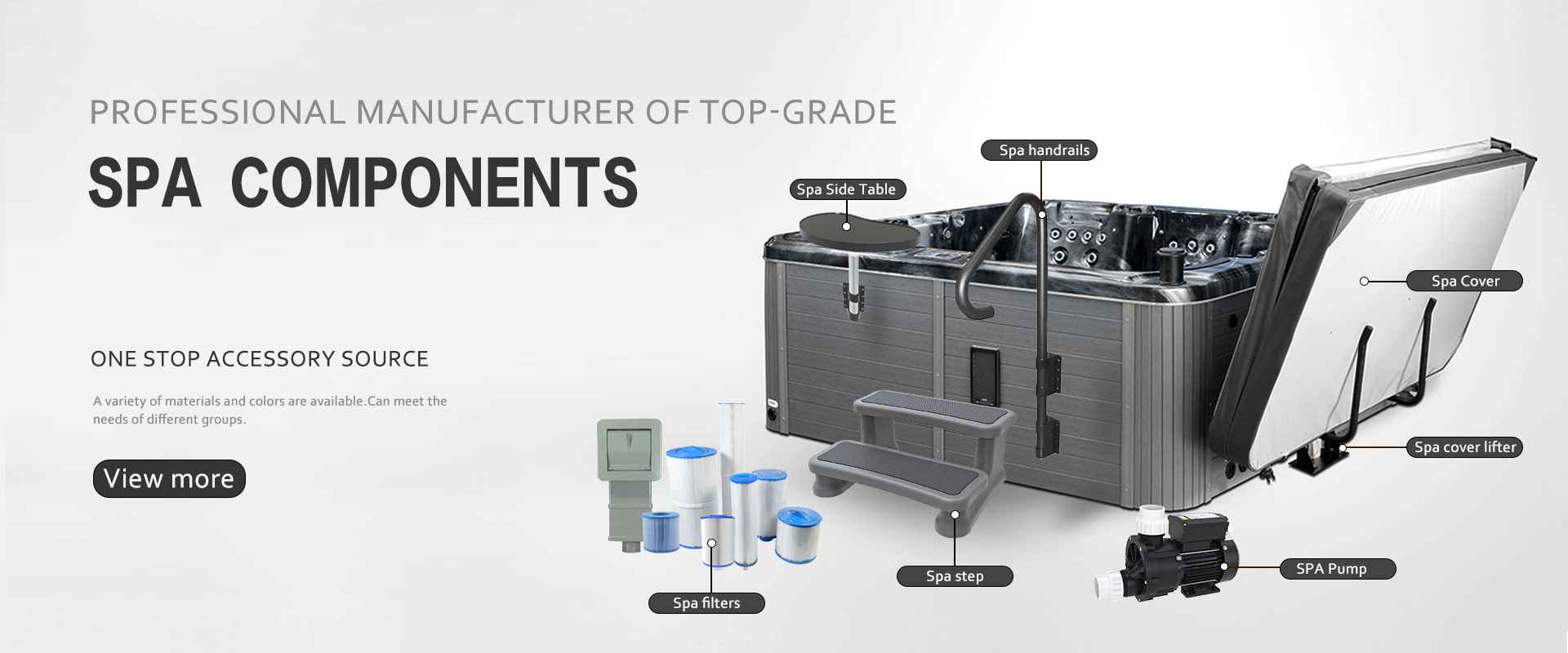Knowing the hot tub components under your shell isn’t just trivia—it’s money in your pocket. When you understand what each part does, you can catch small issues before they become big repairs, keep water clearer, and make smarter upgrades. Below is a plain-English walkthrough of the systems that power your soak: hydraulics, heating, lifter, controls, sensors, sanitation, lighting, and the physical structure that holds everything together.
Structure and Insulation
- Shell: Usually acrylic backed by fiberglass. It holds the water and resists chemicals and UV. Look for uniform thickness and quality molding at jet mounts to minimize cracking.
- Cabinet: Protects internals and defines the look. Composite cabinets resist rot and require less maintenance than wood.
- Insulation: Full-foam or perimeter. Full-foam supports plumbing (fewer leaks) and traps heat well. Perimeter insulation simplifies leak access but may be less efficient in cold climates.
- Base pan: Elevates and protects against ground moisture and critters.
Hydraulics: Pumps, Plumbing, and Jets
- Circulation pump (low-flow): Runs quietly for filtration and heating cycles. If you see a flow error or hear gurgling, check for airlocks or a clogged filter.
- Jet pump(s): High-horsepower pumps provide massage pressure. Cavitation (a rattling or “marbles” sound) suggests low water or suction blockage.
- Plumbing: PVC lines, unions, and check valves route water. Leaks often happen at unions (o-rings) and jet backs.
- Jets: Mix air and water to create therapy. Mineral scaling or hair/linen lint can clog small orifices—remove and clean periodically.

Heating: Element, Housing, and Flow
- Heater element: Typically 1.5–5.5 kW; needs sufficient flow to avoid dry-fire.
- Housing and sensors: Thermal sensors and pressure/flow switches ensure safe operation.
- Common failure signs: Water not heating, GFCI trips when heating starts, or persistent “FLO”/“HL” (hi-limit) errors. Always rule out flow problems first—dirty filters or airlocks will trip safety sensors.
Control System: The Spa’s Brain
- Control pack & circuit board: Coordinates pumps, heater, lights, and safety cutoffs. Power surges and moisture are typical culprits for random reboots or dead panels.
- Topside keypad/display: User interface for modes, temps, and error codes. If unresponsive, check ribbon cable connections and moisture seals.
- Relays and fuses: Wear items—heater relays can pit over time and stick open or closed.
Sensors and Safety Switches
- Hi-limit sensor: Cuts power to the heater if water overheats.
- Thermistor (temperature sensor): Feeds water temp data to the control board; drift can cause inaccurate readings.
- Pressure/flow switches: Confirm that water is moving before enabling heat.
- GFCI protection: Critical for user safety—nuisance trips signal leaks, failing heaters, or wiring faults.
Filtration and Sanitation
- Cartridge filters: Rinse monthly; deep-clean quarterly; replace every 12–18 months. A gray, sticky feel indicates oils and TDS saturation—time to replace.
- Sanitizers: Chlorine or bromine maintain safe water. Alternatives (ozone/UV) reduce chemical demand but don’t replace sanitizer entirely.
- Water balance:
- pH: 7.2–7.8 helps sanitizer work and protects metals.
- Alkalinity: 80–120 ppm cushions pH swings.
- Calcium: 150–250 ppm prevents foaming and protects heaters.
- Shock: Oxidizes organics weekly or after heavy use; non-chlorine shock is popular to avoid raising sanitizer.
Electrical and Lighting
- Wiring: Proper gauge and dedicated circuits are non-negotiable. Loose lugs create heat and intermittent power.
- LED lighting and waterfalls: Usually low-draw but share circuits—if lights flicker when jets fire, check transformer and grounding.
Troubleshooting Fast-Track
- FLO/Low flow error: Clean filter, bleed air from pump unions, ensure water level is above filter intake.
- No heat but pumps run: Verify flow switch status, test heater element resistance, inspect heater relays.
- GFCI trips randomly: Look for moisture intrusion, failing heater sheath, or pump motor insulation breakdown.
- Foamy water: High TDS, low calcium, or residual soaps from swimsuits—rinse suits in plain water, shock, and rebalance.
- Cloudy water: Inadequate filtration or sanitizer; run longer cycles, clean filters, adjust chemistry.
Preventive Maintenance Calendar
- Weekly: Test/balance water; quick skim; inspect cover and strap locks.
- Monthly: Rinse filter; wipe waterline; check cabinet for damp spots.
- Quarterly: Deep-clean filter; purge lines with a system cleaner; drain/refill.
- Annually: Electrical inspection, gasket checks, and a full jet service (remove, clean, inspect o-rings).
Upgrade Ideas That Pay Off
- Variable-speed circulation pump for quieter, cheaper filtration.
- Better insulation (add rigid foam panels in perimeter systems) for colder regions.
- High-efficiency cover with thicker taper to reduce heating cycles.
- Ozone or UV to cut chemical costs and improve clarity.
Takeaway: A hot tub is a system—when you understand how components interact, you solve problems faster, spend less, and enjoy clearer, hotter water with fewer headaches.

